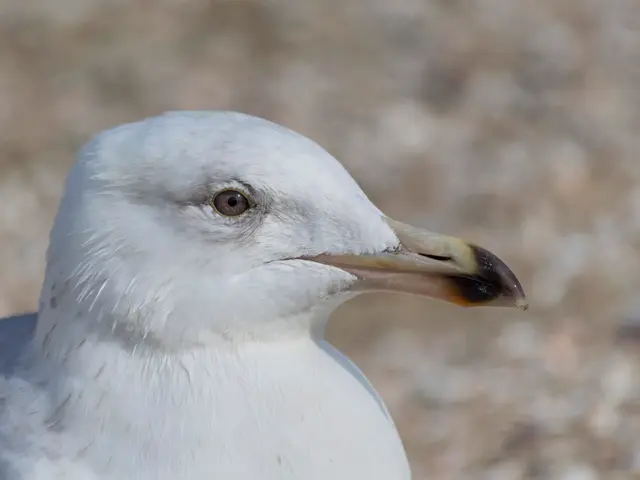Less sparrow activity noted during 'Garden Bird Observation' - Smaller number of sparrows spotted during "Garden Bird Hour"
Berlin Witnesses Decrease in Garden Birds, Particularly Sparrows
In this year's "The Hour of Garden Birds" survey in Berlin, there was a noticeable drop in the overall bird count, with a significant decline in sparrow populations. According to the Nature Conservation Union (NABU) Berlin, approximately ten percent fewer birds were recorded compared to 2024.
Concerns over Sparrow Population
A total of 1,900 bird enthusiasts participated, reporting a combined 30,180 birds. The average number of birds per garden dropped from 27.7 to 24.8, as indicated by NABU Berlin. The most striking decline was observed in house and field sparrows, with a 28% reduction in numbers—though they still remained the most prevalent birds observed.
Field sparrows, smaller relatives often known simply as sparrows, are less common in Berlin compared to house sparrows. Rainer Altenkamp, the first chairman of NABU Berlin, expressed concern over the Berlin sparrow population, noting that this year's findings mirrored their own observations.
Possible Cause Remains Unclear
The cause behind the sparrow declines is yet to be identified, according to NABU. Despite no change in the provision of nesting sites and living spaces, fewer house sparrows have been sighted. It is theorized that cold and dry conditions may have led to reduced insect populations, potentially delaying breeding.
The starling came in second place among observed birds, followed closely by the swallow and the ring-necked dove. The coal tit was seen most frequently. Participants were requested to count birds from a quiet spot in their garden, park, or window, noting the highest number of each species seen within an hour.
Similar Decline Observed in Brandenburg
In Brandenburg, 2,478 bird enthusiasts observed a combined total of 52,311 birds, a drop compared to the 54,364 birds noted last year. For several years, the house sparrow has topped the list in Brandenburg, ahead of the starling, coal tit, blue tit, field sparrow, and blackbird. However, all these species have suffered losses compared to 2024, with the field sparrow showing the greatest decline of 25%.
On average, only 32.45 birds per garden were counted, a decrease compared to the 38.4 birds per garden ten years ago.
Decrease in Bird Counts Nationwide
The nationwide bird count also showed a decrease. Martin Rümmler, the bird protection expert at NABU Germany, noted that many birds are grappling with a lack of food, heat, drought, and other difficulties. Less biodiversity on fields, at the forest edge, and in gardens leads to less food, nesting places, and living spaces for birds.
Several interrelated factors likely contribute to the significant decline in sparrow populations during large garden bird surveys in Berlin. These include habitat loss (especially from modern architecture), food scarcity (linked to insect and grain availability), noise pollution, and increased disturbance or predation, among others (source: additional research). Despite these challenges, Berlin remains one of the stronger sparrow strongholds in Germany due to its green spaces, diverse habitats, and favorable urban policies for wildlife.
Community policy may need to address the sparrow declines in Berlin
As garden sparrow numbers continue to decrease, it could be crucial for the community policy to consider potential measures and initiatives aimed at supporting the sparrow population and increasing food, nesting, and living spaces.
Home-and-garden owners can play a role in reversing the sparrow population trend
Homeowners with gardens can take an active interest in fostering sparrow populations by providing various options that could alleviate factors contributing to the decline, such as insect-attracting plants, bird feeders, or nesting boxes, thus contributing to the local community policy efforts.






